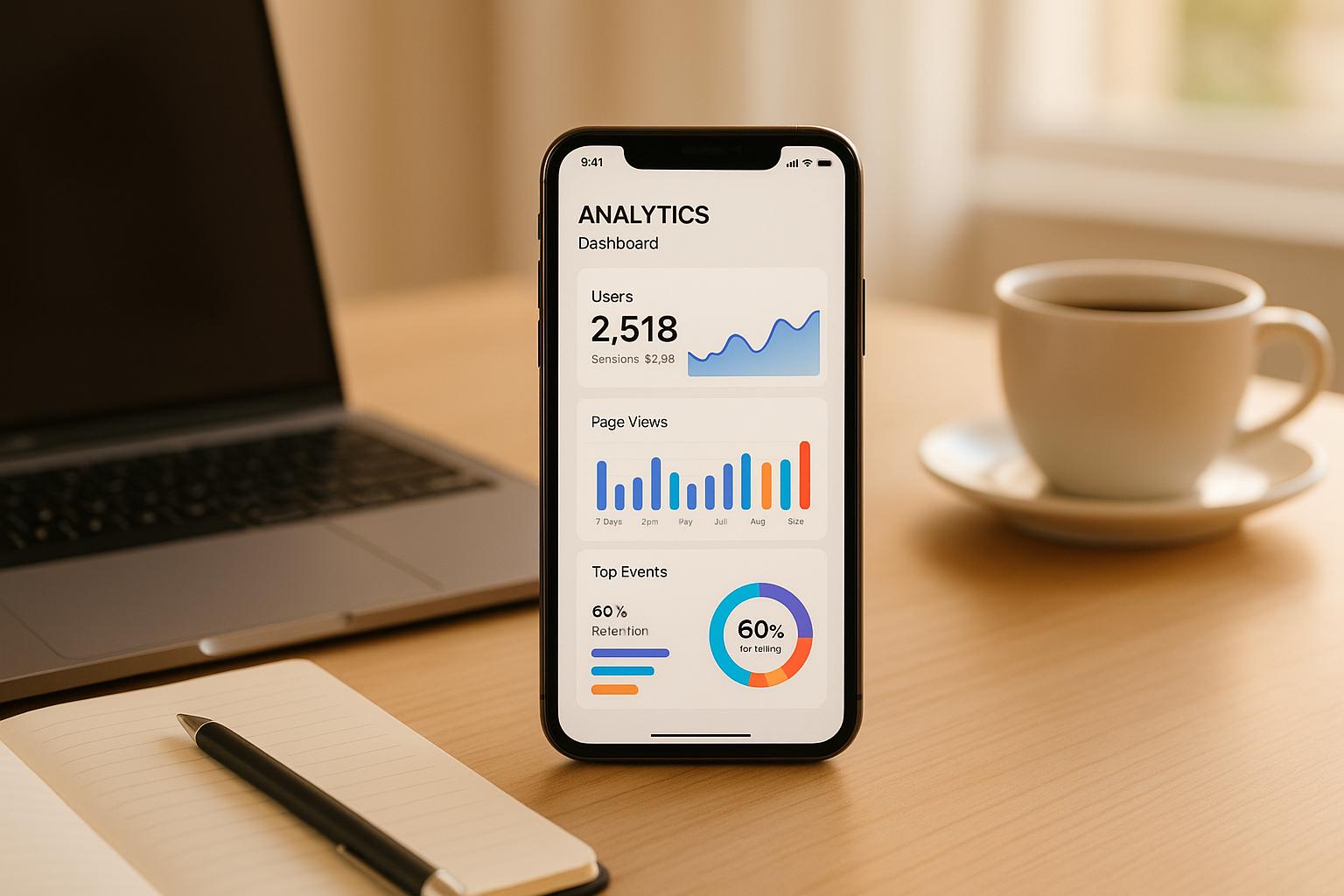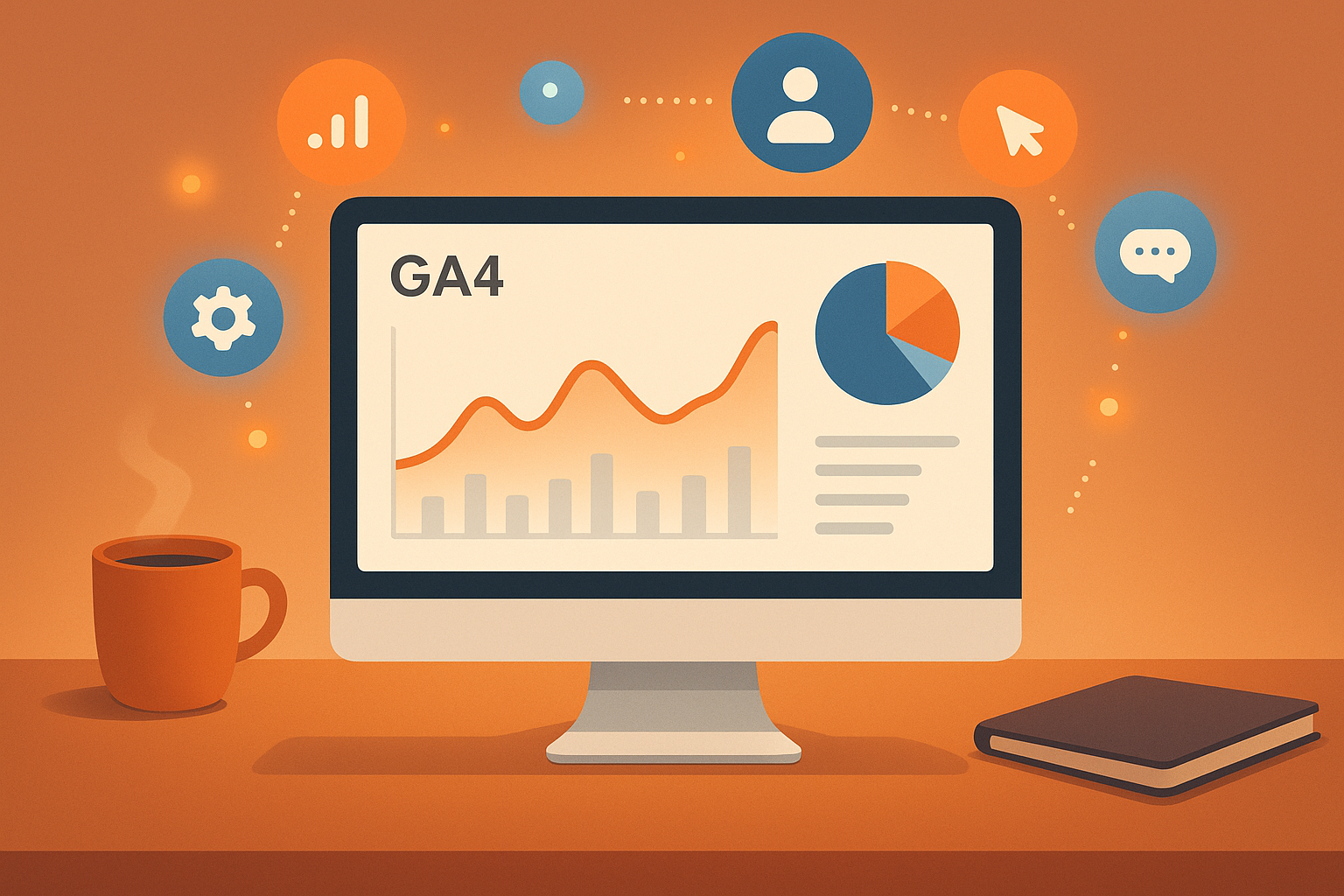Predictive analytics uses data, statistical models, and machine learning to forecast outcomes. It helps businesses anticipate trends, improve decision-making, and identify risks. However, the process often involves repetitive tasks like data preparation and model deployment, which can slow progress and introduce errors.
Workflow automation solves this by automating repetitive tasks, saving time, reducing errors, and improving efficiency. When combined with predictive analytics, automation helps streamline data collection, model training, and decision implementation. Businesses report up to 35% higher productivity and 25–50% cost reductions with automation.
Key takeaways:
- Data preparation: Automation organizes and cleans data, saving time and improving quality.
- Model development: Automated tools refine training and testing, making predictions more reliable.
- Actionable insights: Automation ensures predictions are applied effectively, driving better results.
For example, companies like Unilever and Morgan Stanley have used automation to cut costs, speed up processes, and improve accuracy. The growing adoption of AI-driven automation highlights its role in making predictive analytics faster, more accurate, and cost-effective.
Practical applications for AI, predictive analytics, and automation in PPM
Key Parts of Predictive Analytics
Predictive analytics plays a pivotal role in modern business strategies, with its global market projected to reach $35.45 billion by 2027, growing at a 21.9% annual rate. By breaking down its core components, we can see how automation enhances each stage, leading to smarter and faster decision-making.
Data Collection and Preparation
This stage is the foundation of any predictive analytics project. It involves gathering and organizing data in a format suitable for machine learning. However, managing unstructured data remains a major hurdle. By 2025, an estimated 80% of global data will be unstructured, and 95% of businesses already cite it as a key challenge. Poor data quality is costly, with organizations losing an average of $15 million annually due to data issues.
Data scientists often spend as much as 80% of their time cleaning and preparing data, underscoring the importance of this step. Integrating data from various sources - like customer databases, sales platforms, and market trends - can enhance model performance by up to 20%. Streamlined data preparation sets the stage for more sophisticated analytics and better predictions.
Machine Learning Model Development
Machine learning has become the go-to method for predictive analytics because it excels at uncovering patterns and relationships in data that might escape human analysis. These models are particularly valuable for tackling complex business problems, offering more precise predictions than traditional statistical approaches.
Currently, 95% of organizations leverage predictive analytics, and the AI software market is forecasted to grow from $124 billion in 2022 to $297.9 billion by 2027. Machine learning algorithms are dynamic - they adapt to evolving data patterns, making them more reliable in responding to market shifts and changing customer behaviors.
Developing these models involves selecting the right algorithm, training it with historical data, and testing its accuracy against known outcomes. Automation plays a critical role here, helping refine model training and performance. In fact, 79% of corporate strategists see AI, analytics, and automation as essential tools for success in the next two years.
Turning Insights into Decisions
The final stage focuses on converting predictions into actionable strategies. This is where data-driven insights directly influence business decisions, ensuring that predictions are not just theoretical but lead to real-world improvements.
For example, Motor Oil Group achieved over 77% accuracy in predicting equipment issues 120 to 20 hours in advance. This allowed them to schedule maintenance proactively, reducing both downtime and repair costs. Similarly, Ottogi Corporation uses predictive analytics to forecast demand and guide decisions across sales, marketing, manufacturing, and finance. Their system provides critical insights into market share and overall performance, enabling better resource allocation and strategic planning.
How Workflow Automation Improves Predictive Analytics
Workflow automation simplifies analytics processes and clears bottlenecks, making it easier for organizations to manage complex workflows. The intelligent process automation (IPA) market is projected to grow from $16.16 billion in 2025 to $44.74 billion by 2030, with a compound annual growth rate of 22.6%. This growth highlights how businesses increasingly recognize automation as a key driver for advancing analytical capabilities.
Automating Data Processing Tasks
Automation takes over repetitive tasks like data preprocessing, feature engineering, and model deployment. By ensuring consistency across these stages, it reduces manual errors and speeds up the handling of massive datasets that might otherwise overwhelm human teams. This is especially crucial when working with large, complex datasets across multiple phases of the analytics pipeline.
Take the healthcare sector as an example. According to a Statista report, 81% of clinicians surveyed in China felt overwhelmed by the volume of patient data available. Automation tools can efficiently process and organize such data, aiding in quicker and more accurate disease diagnoses. These streamlined workflows also pave the way for faster and more precise analyses.
Faster Analysis and Predictions
With workflow automation, predictions are generated faster. In fact, 73% of IT leaders report that automation has saved them between 10% and 50% of the time previously spent on manual tasks. This time savings translates to quicker decision-making and more responsive strategies.
For instance, ServiceNow's AI agents have reduced the time needed to handle complex cases by 52%. Additionally, 60% of organizations report achieving ROI within a year of adopting workflow automation, with productivity gains of 25–30% being common. Automation's ability to operate continuously and manage multiple tasks simultaneously eliminates delays caused by manual interventions.
Better Accuracy and Lower Costs
One of the standout benefits of workflow automation is its ability to improve accuracy and cut costs. AI-powered tools can reduce error rates from 20% to less than 1% compared to manual methods. Organizations adopting automation have also reported a 24% drop in operational costs.
Real-world examples bring these benefits to life. Insurers have reduced operational costs by 65% by automating workflows like customer onboarding, policy management, and claims processing. Similarly, financial institutions have seen cost reductions of 30–50% in areas such as invoice management and account reconciliation.
In 2023, Morgan Stanley automated document reviews within its compliance operations, saving thousands of manual hours annually and cutting compliance costs by 30%. Unilever used AI in HR workflows to reduce hiring costs by 50% while improving candidate matching. AI has also sped up accounts payable processing by up to 80% and slashed error rates in insurance and document workflows by more than 90%.
A recent example is CashCo Financial’s 2024 partnership with Feathery. By integrating Feathery’s platform into its loan application processes, CashCo streamlined operations, increased approved loans by 26%, and significantly cut the time spent managing applications.
The trend is clear: over 80% of companies plan to maintain or increase their automation investments, according to Gartner polls. McKinsey & Company also reports widespread adoption, with 88% of financial services firms and 76% of technology companies embracing automation. These advancements are setting the stage for deeper integration between workflow automation and predictive analytics, driving even greater performance improvements.
sbb-itb-5174ba0
Steps to Integrate Workflow Automation with Predictive Analytics
Integrating workflow automation with predictive analytics involves assessing current processes, selecting the right tools, and implementing changes effectively.
Choosing the Right Tools and Platforms
A successful integration starts with finding tools capable of handling both automation and analytics demands. These tools need to integrate smoothly with existing systems like CRMs, ERPs, document management platforms, cloud storage, and email clients. Solutions like iPaaS (Integration Platform as a Service) can bridge the gap between on-premises and cloud-based systems.
Look for platforms that offer easy connectivity and visual workflow designers, which simplify process adjustments as analytics needs evolve. Dashboards are another key feature - they help track KPIs and identify bottlenecks.
Security is a critical consideration when dealing with predictive analytics. Features like encryption, user access controls, and audit trails ensure data protection. Additionally, compliance with industry standards should be a priority.
Scalability is another factor to keep in mind. Choose tools that can grow with your organization, handling increased data volumes and complexities without requiring a complete overhaul. Be mindful of the total cost of ownership, factoring in subscription fees and maintenance costs.
For businesses looking to explore their options, the Marketing Analytics Tools Directory (https://topanalyticstools.com) is a helpful resource. It offers comparisons of platforms designed for real-time analytics, business intelligence, and enterprise-level reporting dashboards that integrate seamlessly with automation workflows.
When evaluating tools, consider your current workflow complexity and the level of automation you need. Compare multiple options and prioritize solutions tailored to your business requirements. Reliability is also essential - opt for software with a proven track record.
Once you've chosen the right tools, setting clear performance goals will help guide your integration process.
Setting Clear Goals and KPIs
After selecting your tools, the next step is defining objectives and measurable KPIs. Clear metrics enhance visibility, track results, and support ongoing improvements.
Studies show that 80% of organizations failing to measure automation KPIs struggle to scale their initiatives, while those using business intelligence tools to track metrics see a 30% higher ROI. Effective KPIs should meet SMART criteria - specific, measurable, achievable, relevant, and time-bound. For predictive analytics workflows, useful metrics might include reduced data processing times, improved prediction accuracy, or cost savings from automated model deployment.
Companies with structured KPI frameworks often see ROI within 9–12 months, compared to 18 months or longer for those without clear metrics. A combination of quantitative and qualitative data gives a fuller picture of performance. Quantitative metrics might track processing speeds or error rates, while qualitative assessments can measure user satisfaction and decision-making confidence. Organizations aligning predictive analytics with measurable goals have reported a 15% revenue boost.
Key areas to focus on include identifying repetitive tasks for automation, mapping KPIs to business objectives, and selecting metrics that offer actionable insights. Balance short-term wins with long-term goals, and involve employees in the KPI selection process to foster understanding and buy-in. Provide training so staff can interpret and act on KPI data effectively.
Rolling Out and Scaling Automation Solutions
With tools and KPIs in place, begin the integration process with pilot projects and scale gradually. A phased rollout minimizes risks and ensures smoother implementation. Start with small-scale projects to demonstrate the benefits of automation, then expand to larger initiatives. This approach allows teams to refine processes and learn from early experiences.
Begin with departments where predictive analytics can deliver immediate results. For instance, marketing teams can use customer behavior predictions, while operations teams might optimize supply chain forecasts. Automating inter-departmental processes can also showcase the broader potential of workflow automation and encourage collaboration.
The human element is crucial during this phase. Invest in targeted training to address concerns about automation and ensure employees are equipped to manage these new processes. Continuous model validation is essential - 45% of data scientists emphasize its importance for maintaining accuracy.
Throughout the rollout, use analytics to monitor performance and track key metrics. Optimizing model features can improve predictive power by up to 30%.
"The first rule of any technology used in a business is that automation applied to an efficient operation will magnify the efficiency. The second is that automation applied to an inefficient operation will magnify the inefficiency." – Bill Gates
Automating tasks like data entry, model deployment, and report generation frees up resources for strategic initiatives. Businesses that automate high-volume tasks often see process times cut by 40–70%, with benefits becoming more noticeable as automation scales. Regular monitoring and optimization are essential - use insights to track progress and identify areas for improvement.
Conclusion and Future Trends
Workflow automation and predictive analytics are reshaping how businesses make decisions, delivering noticeable gains in efficiency and cost savings. For example, organizations have reported 30–40% improvements in process efficiency and cost reductions of 25–50% in specific areas.
Take the financial services sector as a case study. One firm used AI to automate loan application processing, cutting the time from five days to just six hours. Not only that, but the system now handles three times the application volume while achieving 94% accuracy in preliminary approval recommendations. Similarly, in healthcare, automating medical coding and billing processes reduced costs by 42% and improved accuracy from 91% to 99.3%. This shift saved $2.1 million annually in claim rejections and sped up payment cycles by an average of 15 days.
The momentum behind AI-powered workflow automation is undeniable. Over 80% of organizations are already investing in it, and 92% of executives plan to expand adoption by 2025. The global workflow automation market is projected to hit $45.49 billion by 2032, while the robotic process automation (RPA) market is expected to grow at nearly 40% annually through 2030. These trends are shaping the future of entire industries.
Emerging Trends in Automation and AI
Hyperautomation is taking automation to the next level, connecting end-to-end processes through RPA, machine learning, and natural language processing. Meanwhile, autonomous decision intelligence is enabling AI systems to make complex decisions independently. By 2027, this market is expected to grow to $23.7 billion with a CAGR of 27.4%.
"With the incorporation of AI, workflow automation will evolve into what I term 'anticipatory AI.' This advanced form of automation won't merely eliminate repetitive tasks and redundancies; it will proactively anticipate and execute next steps, optimizing business processes in ways we haven't yet imagined." - Kerstin Woods, Vice President of Solutions and Outbound Marketing, Toshiba America Business Solutions
Real-time predictive analytics is also setting the standard for modern business practices. For instance, a logistics company implemented AI-powered route optimization that dynamically adjusts delivery schedules based on real-time traffic, weather, and order priorities. The result? Delivery times dropped by 22%, fuel costs fell by 18%, and on-time delivery rates climbed to 97.5%.
Innovations Driving Smarter Decisions
Several cutting-edge technologies are advancing AI's role in decision-making:
- Explainable AI (XAI) is addressing the "black box" issue by making AI predictions more transparent and easier to trust.
- Neuro-symbolic AI combines neural networks for pattern recognition with symbolic reasoning, enabling more advanced decision-making.
- IoT integration is enhancing real-time, data-driven decisions. For example, AI-powered systems in manufacturing analyze thousands of sensor inputs to predict maintenance needs 15 days ahead of failures, reducing unplanned downtime by 72% and cutting maintenance costs by 34%.
Collaborative AI workflows are also gaining traction, allowing humans and AI to work together more effectively. Teams using AI report saving up to 3.6 hours per week and achieving 90% higher productivity compared to those without AI.
"This shift could mean businesses operate more efficiently, cutting costs while freeing employee time up to focus on strategy and creativity. But with all this potential from AI comes the need for strong ethical frameworks because smarter automation also means greater responsibility in how we use it." - Shoeb Javed, Chief Product Officer, iGrafx
Preparing for the Future
For businesses aiming to stay ahead, the best approach is to start small - automating straightforward workflows and focusing on quick, impactful wins. Emerging technologies like advanced AutoML and digital twins are simplifying predictive modeling, while quantum-enhanced analytics promises to tackle even more complex challenges.
As automation continues to streamline predictive analytics, its value becomes clearer. Success in this space requires treating automation as a cornerstone of digital transformation, backed by high-quality data and well-trained teams. The organizations that can balance AI-powered efficiency with human creativity will be the ones to thrive in this ever-evolving landscape.
FAQs
How does workflow automation improve the accuracy and efficiency of predictive analytics?
Workflow automation plays a key role in improving predictive analytics by reducing human errors and ensuring data is processed consistently. This leads to more accurate models. By automating repetitive tasks such as data collection and preparation, teams save time and can concentrate on in-depth analysis and making strategic decisions.
It also encourages smoother collaboration by establishing clear and standardized processes for managing data. This not only accelerates the predictive analytics process but also delivers more dependable and actionable insights for your business.
What should businesses consider when choosing tools to combine workflow automation with predictive analytics?
When choosing tools to combine workflow automation with predictive analytics, there are several important factors to keep in mind. First, make sure the platform aligns with your team's technical skills, fits your budget, and integrates smoothly with your current systems. Adaptability is another key consideration - opt for tools that support custom model creation and can work with various data sources.
It's also wise to select platforms that offer real-time data processing, encourage team collaboration, and help streamline operations. By focusing on these elements, businesses can enhance accuracy, make better decisions, and boost overall productivity in their data-driven efforts.
What industries have successfully used workflow automation to improve predictive analytics, and what benefits have they seen?
Workflow automation has made waves across industries like manufacturing, healthcare, finance, and marketing, driving advancements in predictive analytics.
Take manufacturing, for instance. By automating production workflows, companies have cut down cycle times and reduced errors, leading to greater efficiency on the factory floor. In healthcare, automation has transformed data processing, boosting accuracy and enabling more precise predictive models. The result? Improved patient care and outcomes.
In finance, automated systems have strengthened security by catching threats early, significantly reducing incidents. Meanwhile, marketing teams have harnessed automation to analyze campaign performance and audience behavior with greater precision. This has not only saved time and money but also empowered teams to make faster, more reliable, data-driven decisions.


